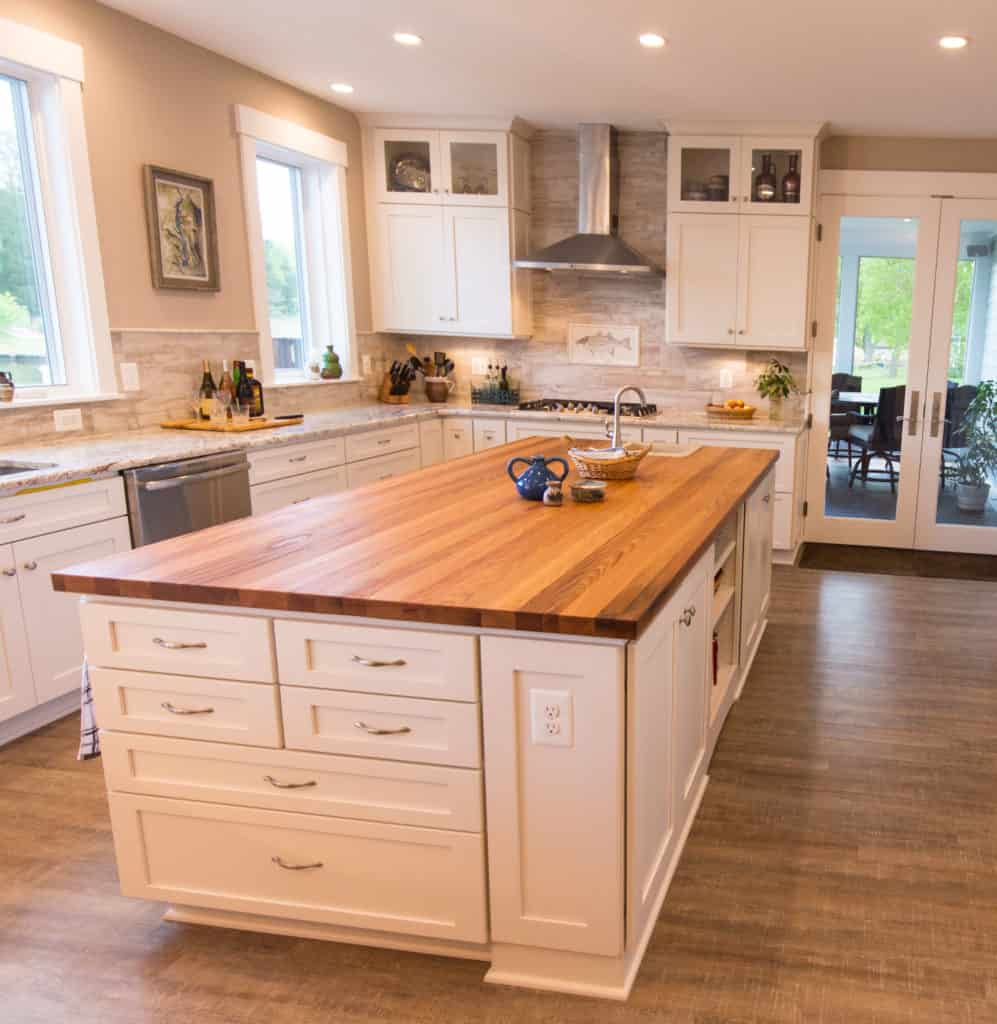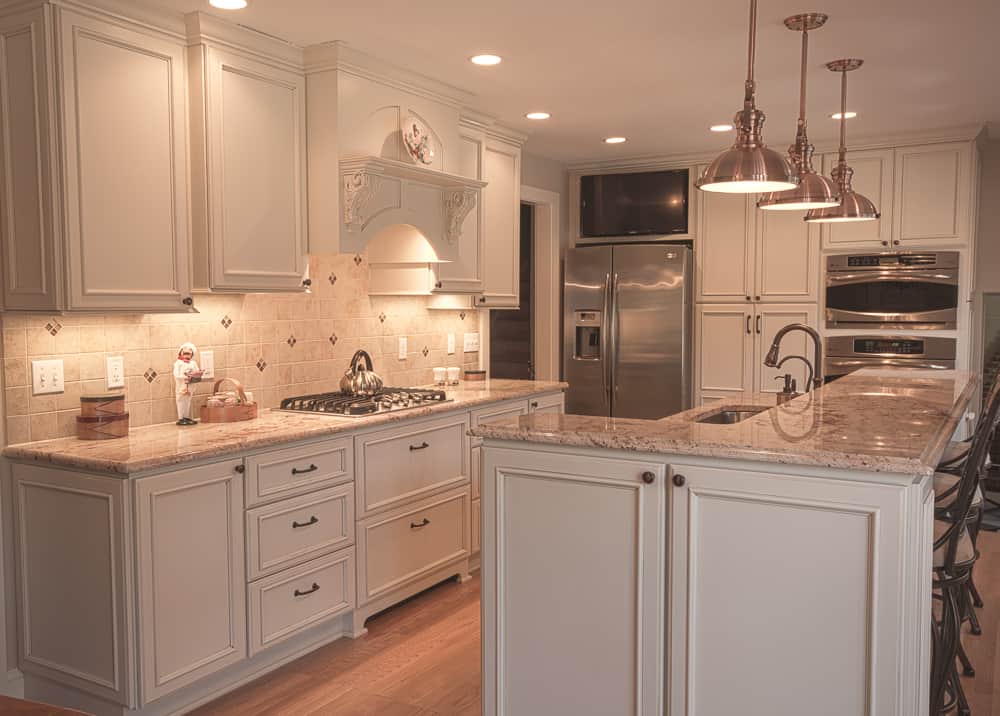Fall in Love with your Home

It’s time to give your house some attention
By Kathy Knotts
We’ve spent more time than usual at home this year, for better or worse. All the extra hours have meant more time to notice those projects you’ve been meaning to get to—for years.
Some of us have managed to tackle a to-do list or two, as industry reports indicate. We spent our extra hours making improvements around the house, from creating home offices to building outdoor decks.
The Home Improvement Research Institute estimates a spending increase of 8.7 percent on home improvement products so far in 2020. Since March, spending on building materials, garden equipment and supplier dealers has increased 7.6 percent, according to the US Department of Commerce.
Local businesses have certainly noticed this uptick in pandemic projects and remind us that fall is a good time to evaluate your home improvement wish list. Now’s the time to think about the steps you need to take to love your home in the years to come.
“Everyone is appreciating their homes more now than before the pandemic,” says John Johnson, president of Creative Spaces Remodeling in Edgewater.
If your home will serve as your office or school throughout the winter months, it’s important to address issues that may have been noticed but tolerable during winters past. Johnson says that making your family comfortable throughout your house should be a priority, especially in family rooms and kitchens, the major hubs of most homes.
“Now that homeowners are cooking at home so much more, countertop space, cabinet space, and just more open space is needed. Many people are finding that they actually need to add an addition or an additional level to their home in order to make the space they desperately need, but do not want to move and/or deal with all the expenses associated with buying a new home. We have crunched the numbers many times with our clients to find that it’s usually better financially to remodel your existing home than to move. “
Consider where work spaces are needed, not only for parents but also children attending school online. “Soundproofing can be a nice improvement when you have several members of the family trying to focus on their work and having conversations all at the same time,” says Johnson.
While tackling a major remodeling project right now isn’t the best idea, smaller projects or planning steps can be squeezed in before the holidays. “Now is the time to hire a design/build remodeler, to just get your thoughts on paper and not be rushed during the design process,” Johnson advises. “It’s always better to take your time through the design process in order to make sure every detail is well planned and reviewed so the construction goes smoothly and you get a chance to really think about what you need and want from your new space.”

Fall is a good time to handle tasks like replacing the batteries in your smoke detectors, having someone come to clean your chimney before fireplace season and sealing up leaks in doors and windows.
Don’t forget to consider your outdoor areas as well. “Outdoor living spaces to stretch out the season longer are really becoming popular. We have several projects currently that were designed for open summer time relaxation but were easily converted into cozy indoor spaces to enjoy all winter long,” says Johnson.
The bottom line, says Johnson, is that the home has become a much higher priority to many families and “they are willing to invest in their quality of life, in addition to making a sound return on investment.”

Aside from dreaming of your new space, this is the time of year to focus on the space you have and how to keep it running smoothly and comfortably as we head into winter. Consider these tips from the experts at the National Association of the Remodeling Industry to help ensure your home is ready before winter weather strikes.
Improve Indoor Air Quality
Now that we are going to spend even more of winter indoors, this increased daily use also increases the importance of indoor air quality. Since windows and doors will likely be closed more often, moisture levels within your home can be significantly affected. Use a humidifier, if necessary, to maintain a relative humidity between 45-50 percent. It can also keep wooden doors and windows functioning properly and wood furniture and floors looking good.
Get Your Furnace Checked
To keep your furnace from failing when you need it most, get it inspected by a professional before you need to rely on it to heat your home in the dead of winter. If you’re not leaving the house and turning down the thermostat each day, this will be especially important this year. Regular tune-ups can prolong your furnace’s life, help prevent carbon monoxide leaks and ensure your unit is working at maximum efficiency. If a whole-house humidifier is included as part of the heating system, also inspect the humidifier and replace the element, if necessary.
Seal Leaks Around Windows and Doors
Air infiltration is one of the largest culprits of reductions in a home’s efficiency. Small air leaks can add up to significant heat loss and a corresponding increase in energy consumption. If replacing window screens with storm windows and installing a storm door on your house isn’t realistic, increase energy efficiency by sealing gaps around window and door moldings with caulk to help keep heat from escaping. If any pipes or ducts travel through an exterior wall of your home, you can also use caulking and weather-stripping to help block potential entry points for cold air.
Check Your Gutters
Improper drainage away from the home is one of the biggest causes of water leaking into basements and crawlspaces. Gutters and downspouts have the single purpose of routing water away from your home to help prevent damage to your foundation. Once leaves have fallen and before the first snow, ensure your gutters are properly secured and clear of debris. Clogged gutters can lead to improper drainage and potential overflow, ice damming or other water-related issues. Also adjust downspouts so they direct water at least five feet from the house to help minimize the possibility of water runoff back toward the foundation.
Prep the Plumbing
When water freezes, it expands. Any residual water in pipes that is exposed to freezing temperatures, including interior lines located in exterior walls or unheated areas, can burst. Start by disconnecting hoses and shutting off exterior faucets, draining any water that remains in them and storing hoses indoors to prevent cracks. Drain any other pipes, valves or in-ground sprinklers that may be exposed to the elements and, for an extra layer of protection, wrap water spigots with covers to prevent damage. Sometimes a simple trick like keeping a cabinet door cracked open to allow warm air into the space can prevent frozen pipes.
Tips courtesy of Family Features.
